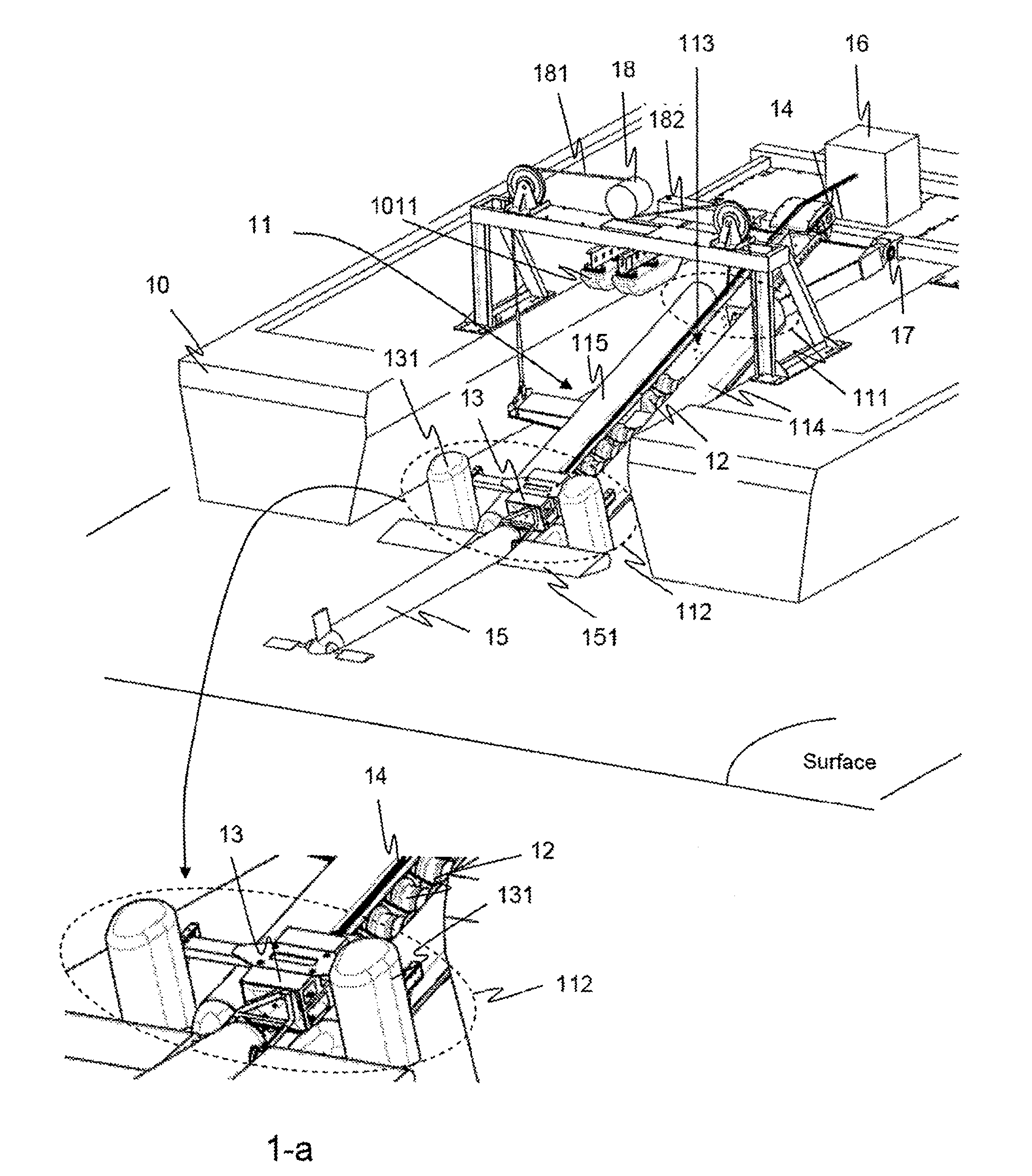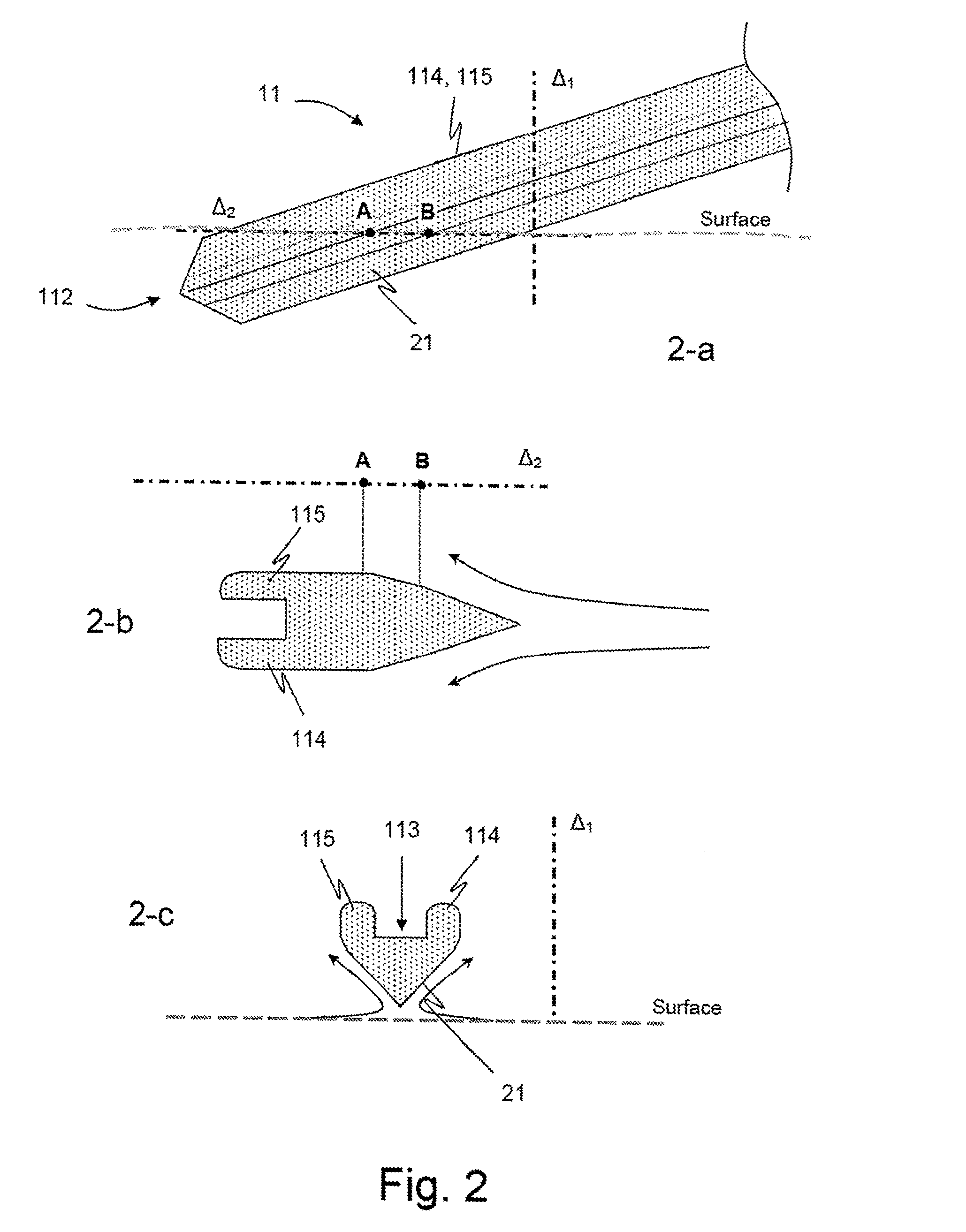System for launching and recovering underwater vehicles, notably towed underwater vehicles
- Summary
- Abstract
- Description
- Claims
- Application Information
AI Technical Summary
Benefits of technology
Problems solved by technology
Method used
Image
Examples
Embodiment Construction
[0033]FIG. 1 gives an overview of this embodiment. In this embodiment, the device is shown on a ship 10 of the catamaran type, between the two hulls thereof. As this figure illustrates, the device according to the invention chiefly comprises the following elements:
[0034]A streamlined articulated ramp 11 preferably situated at the rear of the ship and having one end 111 attached to the ship and one free end 112.
[0035]The fixed end 111 of the ramp is connected to the carrier leaving at least one degree of freedom to rotate about a horizontal axis perpendicular to the main axis of the ramp so that the free end can be raised or lowered in the manner of a drawbridge.
[0036]According to the invention, the ramp 11 is in the overall shape of a chute or channel section with a bottom 113 and edges 114 and 115 the height of which is notably determined according to the size and geometry of the vehicle 15 being handled.
[0037]Means 12 mounted on the ramp and intended to encourage the vehicle to pr...
PUM
 Login to View More
Login to View More Abstract
Description
Claims
Application Information
 Login to View More
Login to View More - R&D Engineer
- R&D Manager
- IP Professional
- Industry Leading Data Capabilities
- Powerful AI technology
- Patent DNA Extraction
Browse by: Latest US Patents, China's latest patents, Technical Efficacy Thesaurus, Application Domain, Technology Topic, Popular Technical Reports.
© 2024 PatSnap. All rights reserved.Legal|Privacy policy|Modern Slavery Act Transparency Statement|Sitemap|About US| Contact US: help@patsnap.com










